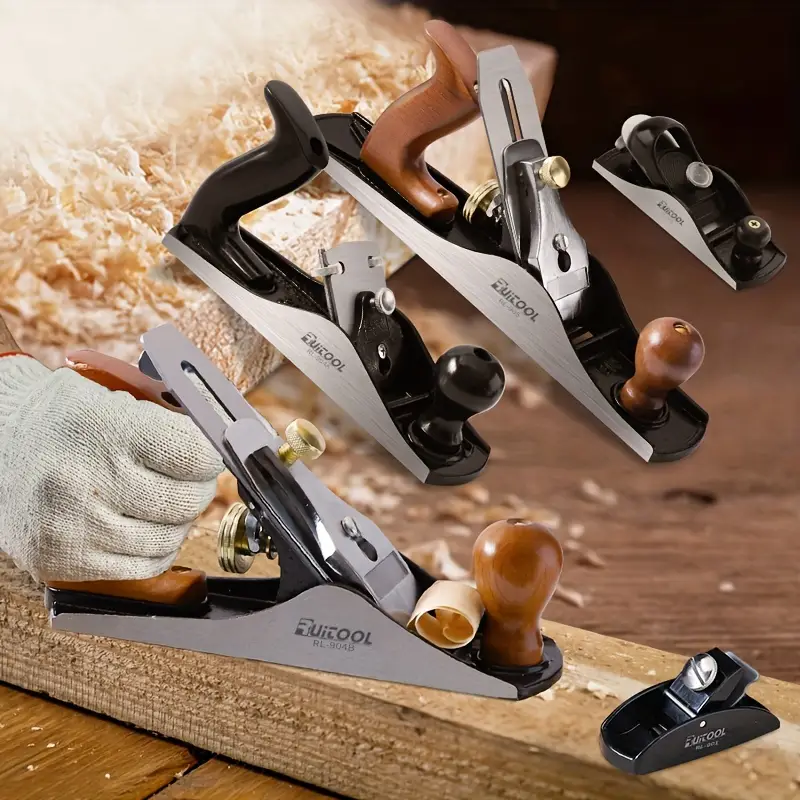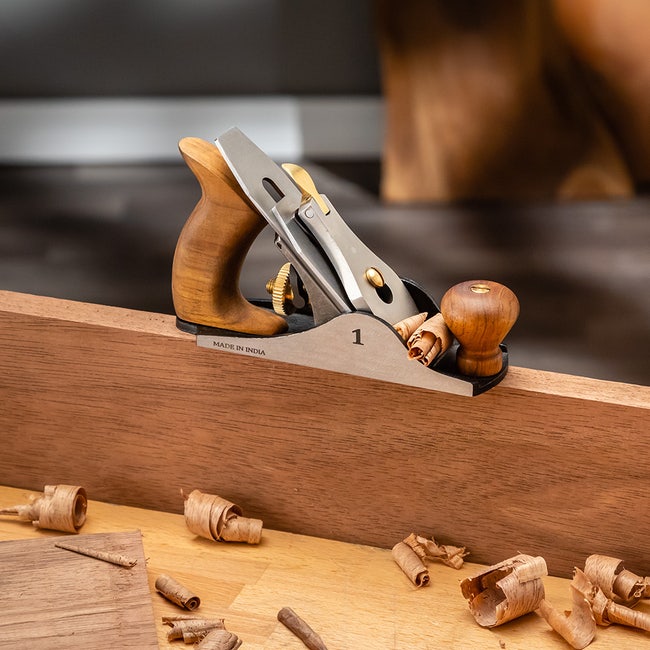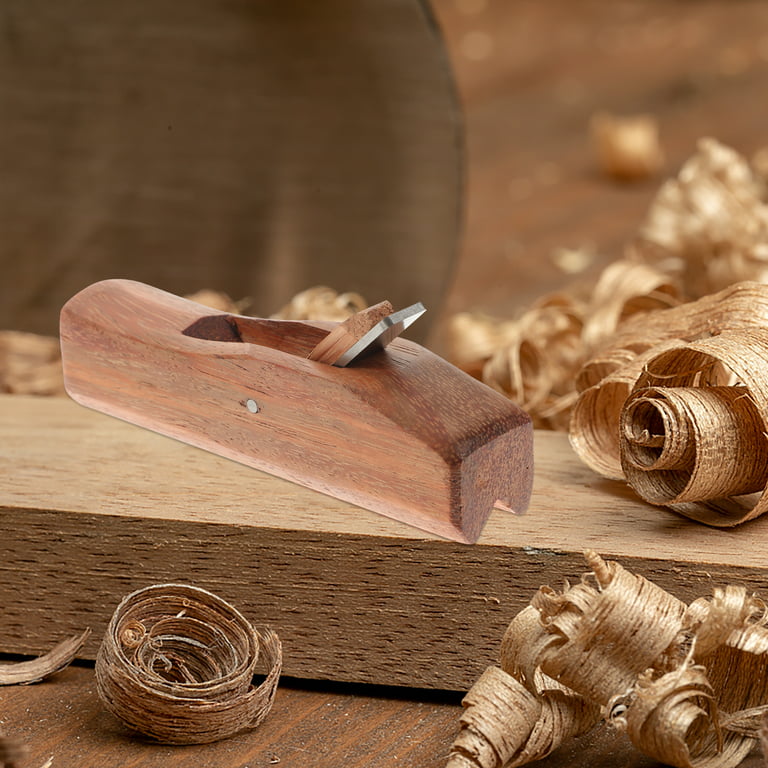Introduction
A hand plane is a woodworking tool that can shave and smooth wood surfaces. It consists of a flat, sharp blade (iron) that is set at an angle and protrudes through the bottom of a flat base (sole). The base has a handle at the rear and a knob at the front for the user to hold and control the plane. The blade is held in place by a lever cap or chip breaker that applies pressure to keep the blade in position.
Hand planing is a woodworking technique that has been used for centuries to smooth and shape wood. While power tools have become more prevalent in modern woodworking, the art of hand planing still holds an important place in the craft. In this comprehensive guide, We will explore the history, types, and techniques of hand planing. As well as its benefits and practical applications in woodworking.
Part 1: The History of Hand Planing
Hand planes have been used for centuries and are still widely used by woodworkers today, despite the availability of power tools. Many woodworkers prefer hand planes for their precision, control, and the tactile feedback they provide. Hand planes are also valued for their ability to produce a superior surface finish, often surpassing that of power tools.
Level 1: Origins and Development
Hand planing dates back to ancient civilizations, where rudimentary tools were used to shape wood. Over the centuries, the design and functionality of hand planes evolved, leading to the sophisticated tools used by woodworkers today.
Level 2: Industrial Revolution and Beyond
The Industrial Revolution brought about advancements in hand plane design and production, making them more accessible to a wider audience. Today, hand planes are revered for their precision and craftsmanship, with many woodworkers preferring them over power tools for certain tasks.
Part 2: Types of Hand Planes
Hand planes come in various shapes and sizes, each designed for a specific purpose. Some common types of hand planes include block planes, smoothing planes, jack planes, and jointer planes. Each type of plane is used for a different task, such as smoothing flat surfaces, straightening edges, or creating jointed surfaces.
Level 1: Bench Planes
Bench planes are the most common type of hand plane and are used for general woodworking tasks, such as flattening and smoothing boards. They come in different sizes, each serving a specific purpose in the woodworking process.
Level 2: Specialty Planes
Specialty hand planes, such as block planes, shoulder planes, and router planes, are designed for specific tasks that require precision and attention to detail. These planes are essential for creating intricate joinery and fine woodworking projects.
Part 3: Techniques of Hand Planing
Using a hand plane requires proper technique and skill. The user must hold the plane firmly, apply even pressure, and adjust the blade to the desired depth for shaving wood. The plane should be pushed forward with steady, even strokes, allowing the blade to remove thin layers of wood as it glides along the surface. The goal is to achieve a smooth, flat finish with minimal tear-out or splintering.
While hand planes are traditional hand tools, they are still widely used by modern woodworkers. Many traditional hand plane designs are still in production, and there is a thriving community of people who collect, restore, and use vintage hand planes. In recent years, there has also been a resurgence of interest in hand tool woodworking. With many people turning to hand planes as a way to reconnect with traditional techniques.
Level 1: Setting Up a Hand Plane
Properly setting up a hand plane is crucial for achieving precise and consistent results. This includes sharpening the blade, adjusting the frog and blade depth, and ensuring the sole of the plane is flat and smooth.
Level 2: Planing Techniques
Different planing techniques, such as the use of a shooting board, skewing the plane, and adjusting the angle of the blade, can greatly impact the outcome of a woodworking project. Mastering these techniques is essential for achieving professional-level results.
Part 4: Benefits of Hand Planing
Level 1: Craftsmanship and Precision
Hand planing allows woodworkers to connect with their materials and create finely-crafted pieces with a level of precision that is difficult to achieve with power tools. The tactile feedback and control offered by hand planing contribute to a deeper sense of craftsmanship.
Level 2: Sustainability and Environmental Impact
Using hand planes instead of power tools reduces the reliance on electricity and minimizes the production of wood dust and air pollution. This makes hand planing a more sustainable and environmentally-friendly option for woodworking.
Part 5: Practical Applications of Hand Planing
Using a hand plane requires skill and precision. The angle and depth of the blade, as well as the pressure applied by the user, all contribute to the quality of the finished surface. Many woodworkers take pride in their ability to achieve a glass-smooth finish with a hand plane. They are an essential tool for creating precise joinery, such as fitting mortise and tenon joints, in combination with other hand tools to achieve the desired result.
Level 1: Fine Woodworking Projects
Hand planing is well-suited for fine woodworking projects that require intricate joinery, such as dovetails, mortise and tenons, and complex mouldings. The precision and control offered by hand planes make them an indispensable tool for achieving excellent results.
Level 2: Restoration and Repairs
Hand planes are also used in the restoration and repair of antique furniture and other wooden objects. Their ability to delicately shave off small amounts of wood makes them ideal for fixing imperfections and bringing old pieces back to life.

Part 6: Types of Hand Planes
Level 1: Traditional Hand Planes
- Smoothing Plane: A fine-toothed plane used for finishing and smoothing the surface of wood.
- Jack Plane: A versatile plane that can be used for rough shaping and smoothing.
Level 2: Specialty Hand Planes
- Block Plane: A small, versatile plane used for trimming end grain, chamfering edges, and smoothing small surfaces.
- Shoulder Plane: Designed for cleaning up the shoulders of a joint, such as a tenon or rabbet.
Part 7: Hand Plane Maintenance
Level 1: Cleaning and Lubricating
- Regularly cleaning the plane’s sole and body with a cloth and lubricating moving parts with a light oil will keep it in good working condition.
- Removing rust with steel wool and applying a rust-preventing coating can help prolong the lifespan of the hand plane.
Level 2: Sharpening the Blade
- Keeping the blade sharp is crucial for achieving smooth and clean cuts. Using sharpening stones or a honing guide can maintain the blade’s edge.
- Checking the blade for any nicks or damage and repairing or replacing it when necessary is essential for optimal performance.
Part 8: Hand Plane Techniques
A hand plane is a tool for shaping and smoothing wood. It consists of a sharp blade, called the iron. By pushing it along the surface of the wood, which causes the blade to shave off thin layers. Creating a smooth and flat finish.
For centuries, hand planes come in a variety of sizes and shapes for woodworking and specific tasks. Smaller planes, such as block planes, are ideal for fine work and small, delicate pieces. There are also specialty planes, such as jointer planes and rabbet planes for specific tasks. Like creating flat surfaces and cutting grooves.
Level 1: Basic Planing
- First, clamp the wood firmly, paying attention to the grain direction. Then, use the hand plane in a smooth, fluid motion to remove thin shavings of wood.
- Adjusting the depth of the cut and the angle of the blade will allow for more or less aggressive cutting as needed.
Level 2: Advanced Techniques
- Planing difficult grain, such as curly or figured wood, may require specialized techniques and a keen eye for the grain direction to avoid tear-out.
- Using hand planes for jointing and smoothing large. Flat panels is focusing on consistent pressure and technique to achieve a flat surface.
Conclusion
In addition to their woodworking applications, in musical instrument making, boat building, and other crafts that require precise shaping and smoothing of wood. They are also popular among hobbyists and DIY enthusiasts who enjoy working with wood and appreciate the satisfaction of creating handcrafted items.
Overall, hand planes are versatile and essential tools for anyone working with wood. Their timeless design and functionality make them a valuable addition to any woodworking toolbox. Hand planing is an art form, offering woodworkers a sense of tradition, precision, and craftsmanship. By understanding the history, types, techniques, benefits, and practical applications of hand planing. Woodworkers can fully appreciate the value of this timeless woodworking technique. Whether working on fine woodworking projects or restoring antique pieces. Hand planing continues to be a valuable skill that shapes the craft of woodworking.




